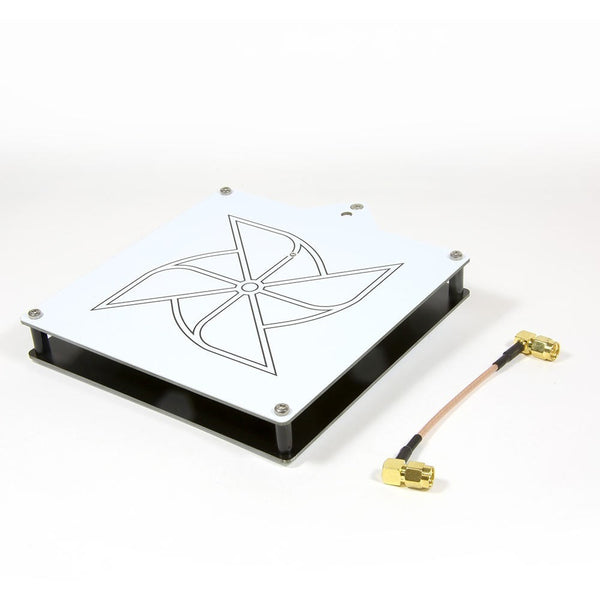

Patch, substrate, and ground plane are the three basicĬomponents of a micro-strip patch antenna in general. The proposed monopole antenna in this paper does not have the requisite bandwidth, and its gain is insufficient. Microstrip patch antennas are being explored because they provide better outcomes for multi-band operation than a traditional monopole antenna configurations. The chosen type of antenna also plays an important role in meeting the requirements and determining the overall performance of the devices. This 5G antenna should be able to cover the existing Wireless Fidelity(Wifi), Worldwide Interoperability for Microwave Access(WiMAX) and Long-Term Evolution(LTE) bands in sub-6 GHz spectrum. Instead of designing separate antennas for various applications, it is essential to design a single compact antenna which can cover majority of the requirements with a high performance. Due to which antenna size has become a topic of concern.
WIFI PATCH ANTENNA PORTABLE
With adapting to the new 5G technology, the size of portable communication devices is becoming smaller.

Sub 6 GHz spectrum is ideal band for 5G communication because it provides a high speed of data transmission over long distances.Īntennas are a necessary component of a cellular communication system as they determine the overall performance of the device. The low-band covers frequencies up to 1 GHz, the mid-band covers from 1-6 GHz and the high- band is the mm-Wave (Millimeter Wave) spectrum. For the implementation of 5G communication technology, the Federal Communications Commission(FCC) has divided the spectrum into different band, namely low-band, 5G communication assures us a high-speed data transmission rate, reliable low latency communications and high mobility. To overcome these problems, Fifth Generation(5G) communication systems are being designed and deployed. Considering the requirements for communication systems, data traffic will also increase by a large amount in the coming future. The results are in good agreement for wireless applications.ĭue to ever increasing growth in wireless communication the demand for mobiles, smartphones and internet of things (IoT) antennas have been increased which requires more bandwidth. The simulated efficiency of the proposed antenna at 2.4GHz is 77%, 80% at 3.4 and 73% at 5.27GHz, whereas overall efficiency of the antenna is 76%. The simulated results show us that the antenna has return loss of -32dB at 2.4GHz, The antenna is designed on Rogers RT/duroid 5880 substrate with dielectric constant of 2.2 and its dimensions are 56 Ã- 49 Ã-ġ.6 mm3. A triangular micro-strip patch antenna with two horizontal slots and three L shapes is presented.
WIFI PATCH ANTENNA BLUETOOTH
The antenna which is designed is able to cover WiFi and Bluetooth frequency which is 2.4GHz, WiMAX band which is fromģ.3 to 3.6 GHz and WLAN spectrum from 5.1-5.3 GHz. Mathukumilli Nitin Srinivas Prasad Department of Electronics and Communication EngineeringVisvesvaraya National Institute of Technology Nagpur, IndiaĪbstractThis paper presents a design of a multi-band slotted patch antenna which covers Fifth Generation (5G), WiFi(Wireless Fidelity), WiMax(Worldwide Interoperability for Microwave Ac- cess) and WLAN(Wireless Local area network) applications in sub 6 GHz spectrum. Design of Multi-band Patch Antenna for 5G, WiFi, Bluetooth, WiMax and WLAN Applicationsĭepartment of Electronics and Communication EngineeringVisvesvaraya National Institute of Technology Nagpur, IndiaĮrigela Harinath Reddy Department of Electronics and Communication EngineeringVisvesvaraya National Institute of


 0 kommentar(er)
0 kommentar(er)
